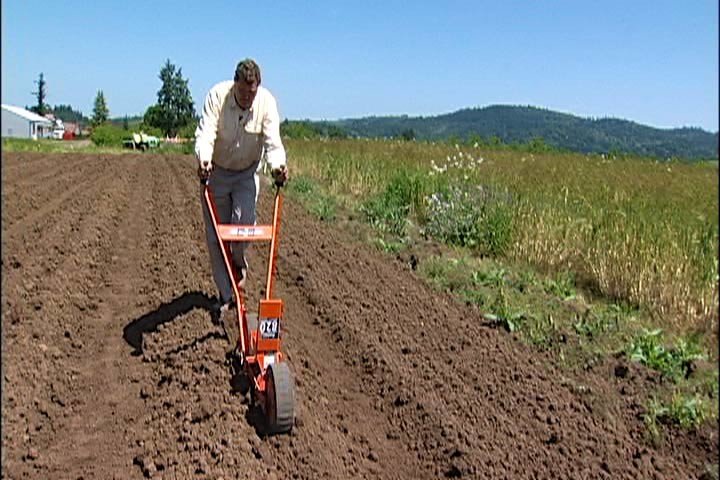Organic Farmer Anthony Boutard, shares his expert knowledge on storing & planting heirloom corn.
What’s most remarkable about hanging out with Anthony Boutard besides his passion for food, it’s his incredible breadth of knowledge about organic farming. He does everything by hand, and he constantly is learning from his observations and field experiments. As Boutard is readying his corn seeds for planting in this video, he is doing another experiment by separating the 3 different corn varieties onto different plots of land to learn more about their unique characteristics.
In a follow-up email, I asked Anthony Boutard a few more questions about his corn. This is what I learned from him, some of his responses are provided just as he wrote them.

The device that removes the kernel of corn from the ear is called a “corn sheller”, and is made by C. S. Bell and Company, located in Tiffin, Ohio.
The process of removing corn kernels from the ear is known as “shelling”. As Boutard explains in the video, the best place to store ears of corn prior to shelling are in “cool, dry places without rodents”.
Longevity of the seed depends upon a variety of factors, in general, the seed will keep for several years, depending also, upon the variety. After a couple of years, the viability of the seed begins declining. Storing the seed on the ear, lengthens the period of time the seed remains viable.
Boutard explains how he determines the best time to plant his corn:
“This year, or normally . . . Corn planting is governed by soil temperature. Generally, you want soil temperature of 60 degrees (16 C) or higher. Sweet corn needs the soil closer to 70 degrees (21 C), or it will rot before it germinates.
Corn is harvested at “physiological maturity” in the autumn. A sooty layer forms where the kernel is attached to the ear, a sign that the ear has matured. Maturity varies greatly among the varieties. In Oregon, Roy’s Calais Flint is mature by early September, while gourd seed corn needs another month or so, late November if you are lucky.”

These are the varieties of corn that he planted:
Orange: Roy’s Calais Flint
Yellow:
Red:
“They are all Roy’s Calais Flint. It has many different kernel colors. I think I referred to the variety having a superb library of traits found in the Northeastern eight row flint corns.
Unlike ornamental varieties, all of the kernels on an ear are the same color. The color varies from ear to ear. I separated the kernels to get a better understanding of the corn, and to build up the red color in my “grex,” as the the breeding population is called. Nice scrabble word, huh? Get rid on an X and if you hit a triple word square, good for 36 points.
The red kernel is apparently a recessive trait, so you have to pay attention to it. The red kernel matures earlier and has better cold soil germination, so I favor it. “
Boutard is working on a new book on the subject of corn, as he describes below:
“The working title is: Beautiful Corn: A guide to growing, milling and cooking America’s grain. The book is loosely organized as an almanac, following corn through the year, as well as from kernel to plate. In addition to the practical details, I hope to encourage readers to pause in the corn field and take a moment to contemplate the aesthetics of this remarkable sweet grass. It is a beguiling and accommodating plant that has seduced its cultivators from its earliest cultivation in southern Mexico.”
Most of the videos featured on Cooking Up a Story were produced, filmed, and edited by Rebecca Gerendasy. Fred Gerendasy contributed as a writer to many of the posts and occasionally as the interviewer. Visit Rebecca Gerendasy Clay – Art and Fred Gerendasy Photography to see their current work.
